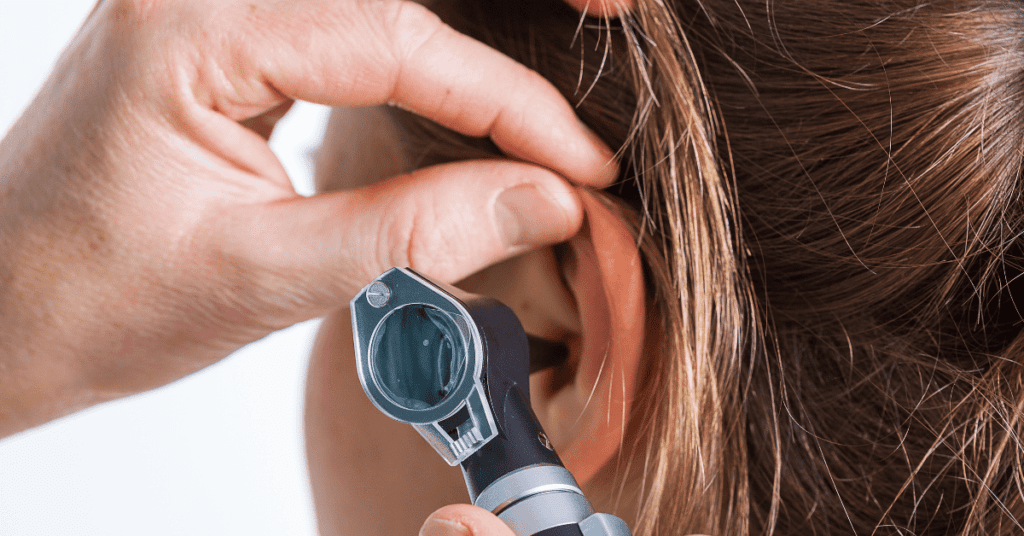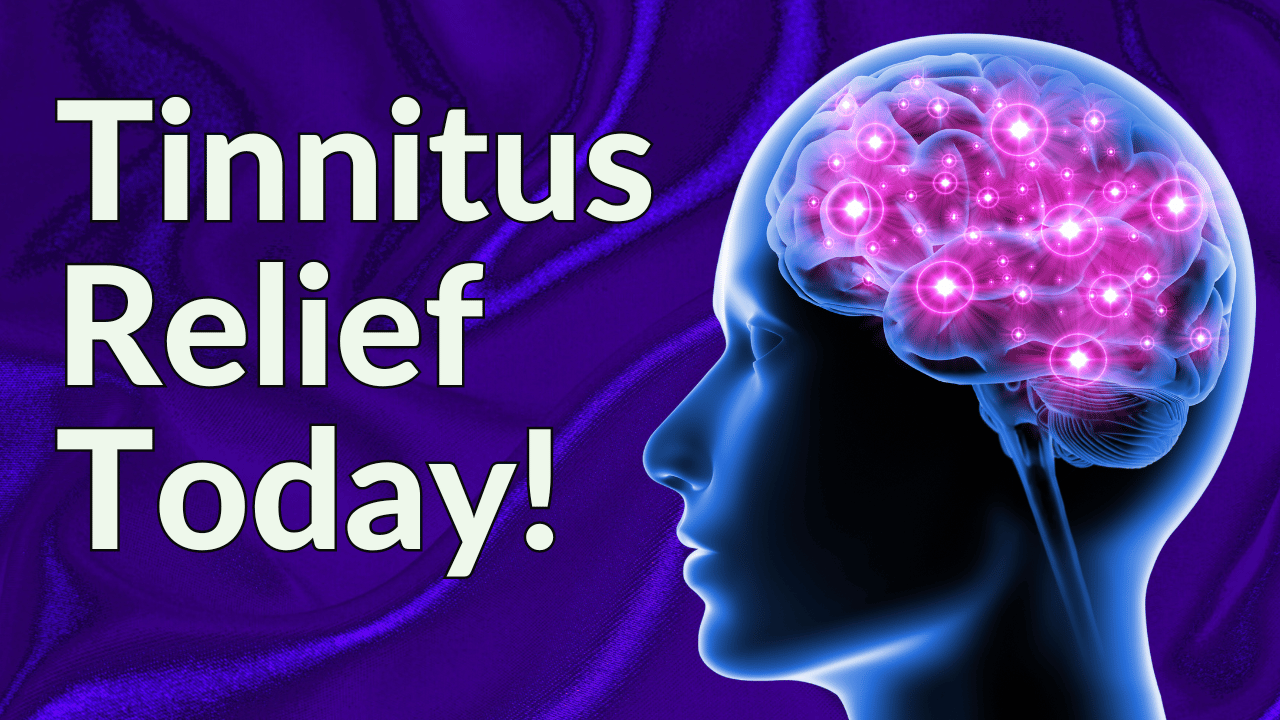Similar to phantom limb pain, tinnitus is only perceived by the individual and cannot be heard by others. While most people with tinnitus do not find it bothersome, for some, tinnitus symptoms can be overwhelming and cause a great deal of distress. Part of the issue is that there is no clear-cut way to experience relief from tinnitus. Furthermore, there is a lot of variability in tinnitus symptoms. The phantom tinnitus sounds possess various characteristics that differ from individual to individual.
While it is most often described as ringing in the ears, tinnitus can also be in a form of other noises such as rushing, humming, roaring or buzzing. Tinnitus is called a disorder of “phantom sounds,” because tinnitus patients hear a noise without an actual sound being present. In this way, it can also be described as a neurological disorder, as it is linked to the manner in which the brain interprets auditory system cues and input.
Who Experiences Phantom Sounds?
Both children and adults can develop tinnitus. In adults, tinnitus symptoms may more often be accompanied by hearing loss and other auditory changes, while in children, tinnitus may not as frequently involve hearing loss, but may involve infections within the ear canal. Age does not necessarily determine whether or not tinnitus may be present, but instead may affect the most likely cause.
Epidemiological studies have suggested that the prevalence of tinnitus is between 8 and 25.3% of the adult population in the United States. An analysis of responses confirms this to be the case, and suggests that tinnitus is prevalent in the general adult population. The source of phantom sounds is not always identified in these studies, nor is the presence or lack of normal hearing among tinnitus patients.
Tinnitus is often associated with another condition, called hyperacusis. Hyperacusis refers to decreased tolerance of sounds and is also frequently seen in individuals with hearing loss. Both tinnitus and hyperacusis, as well as hearing loss, are likely to have a common underlying cause: loss of hair cells. Hair cells are found inside the organ of hearing, called cochlea. The loss of cells occurs throughout our lifetime and is a normal consequence of the aging process, but can be worsened because of exposure to loud noise or toxic substances.
"Treble Health helped me reduce my tinnitus by about 80%, and now I can live my life again!"


"Treble Health helped me reduce my tinnitus by about 80%, and now I can live my life again!"
– Steve D.
Book a free consultation to learn which Treble Health solution is right for you. Join Steve and thousands more who have found lasting tinnitus relief.
Children and adolescents are similarly affected by tinnitus and hyperacusis. This population experiences phantom sound at a rate of between 4.7% and 46% in the general pediatric population with normal hearing, and from 23.5% to 62.2% of the population of children with hearing loss. The precise prevalence is difficult to determine, as ear ringing varies considerably according to study design, study population, and the precise questions being posed in the studies.
Because there is so much variability among studies on tinnitus and those who hear ringing in the ears, more studies are needed to determine more precise numbers regarding tinnitus prevalence in both the pediatric and adult populations in the U.S. and elsewhere.
Symptoms Of Tinnitus
Tinnitus symptoms are not concrete across the board, as different patients describe phantom sounds differently. Some consider tinnitus more of a buzzing sound, others say it sounds closer to ringing, and still others say hissing, chirping, roaring, clicking, or humming. The difference in sounds often do not show up on hearing tests and rely entirely on how the person’s brain interprets input from the auditory nerve, making it difficult to identify a single, consistent descriptor for symptoms.



In some cases, tinnitus presents as a rhythmic pulsing or whooshing sound in time with your heartbeat. This type of tinnitus is called pulsatile tinnitus, and in some cases can signal a serious condition in need of a more thorough evaluation. Unlike tinnitus that is primarily related to the auditory nerve, pulsatile tinnitus can be heard with a stethoscope (making it objective tinnitus, or a form of the condition that can be measured, and the cause identified and treated).
Regardless of the exact type of tinnitus being experienced, a patient’s tinnitus symptoms can fluctuate or change. Phantom sounds can occur in one or both ears, or can seem to be entirely in your head, without a clear ear being affected. Environmental sounds can make tinnitus worse for some, while others see changes primarily to physiological changes like loss of sleep, mental health changes, or increases in stress.
Chronic tinnitus and acute tinnitus are different types of the condition. If phantom sound has been present for three months or longer, it is considered chronic. If symptoms are intermittent or last fewer than three months, it is likely considered an acute case. Tinnitus management may depend on the type of symptoms being experienced and how sound signals are being crossed.
Common Causes Of Tinnitus
The exact causes of tinnitus are not always understood or even known. The most common cause of tinnitus is hearing loss–mostly often of the inner ear–due to a lack of input or changes to the signal carried by nerves to the part of the brain that processes sound. This is called the auditory cortex, and it is the portion of the brain that has been considered at the root of tinnitus generation–though the exact causes vary greatly.
Other common causes include age-related hearing loss. Although a hearing aid is often a frontline treatment for hearing loss on its own, hearing aids can also be useful for tinnitus treatment, as they can function as masking devices to ease some of the sensations associated with tinnitus.
Temporary hearing loss following exposure to loud sounds can also trigger tinnitus symptoms. In this case, symptoms are often acute, and once the inner ear has healed somewhat, symptoms may abate. In these cases, a white noise machine can be used to mitigate symptoms until tinnitus is no longer present.
Congenital hearing loss is a type of hearing condition that occurs in response to a genetic anomaly or prenatal infection. People with congenital hearing loss may be at greater risk of developing tinnitus, and treatment options will typically focus on hearing aids, mental health intervention, and other forms of management rather than mitigation.
Conductive hearing loss commonly related to earwax blockage, ear infections in the ear canal or middle ear space, and other infections can also lead to tinnitus onset. Exact numbers regarding each type of hearing loss are not known, but it is known that hearing loss as a whole is a risk factor for tinnitus.
Other Forms Of Tinnitus Onset
Hearing loss may be the most common reason for tinnitus development, but there are other causes. These include loud noise exposure, medication interactions, head and neck injuries, jaw and dental problems, Meniere’s Disease, autoimmune disorders, and certain chronic conditions, such as diabetes and migraines.
Additional evidence has demonstrated that abnormal interactions between the auditory cortex and other neural circuits–including the areas that control attention and emotions–may also play a role in tinnitus development. Abnormal neuronal activity can be linked to other conditions, and may inform treatment options for tinnitus.
Other factors that can exacerbate tinnitus include stress and anxiety, excess caffeine or alcohol intake, high sodium levels in the diet, sleep deprivation, dehydration, and nicotine use. Despite the recognition of tinnitus as a condition, it is viewed as a symptom of other conditions, such as hearing damage, inadequate stress management, an earwax blockage, and more.
Limbic Auditory Interactions
The limbic system is the part of the brain involved in behavioral and emotional responses. The Limbic system tells the body that tinnitus is harmful or threatening, and the brain struggles to ignore that warning. These limbic-auditory system interactions mean that addressing tinnitus often means addressing thought processes and using mental health intervention as a tinnitus management tool. Chronic tinnitus has been associated with structural changes to the brain in both the auditory and limbic systems. These same findings demonstrate that depression and anxiety are major modulators of brain structural effects in those with tinnitus. Consequently, a stronger consideration of psychopathology in future neurobiological and clinical studies of tinnitus is warranted.
Tinnitus Diagnosis



When seeking out a diagnosis, first see a primary care physician to check for wax, fluid, and an infection in the ear. From there, you may be referred to a doctor of audiology and/or an ear, nose, and throat specialist. In both cases, to screen for acute or chronic tinnitus, you will likely be given an audiologic evaluation (including a hearing test), an examination of the ear, nose, throat, head, and neck, and in some cases, you may be required to undergo imaging tests to screen for pulsatile tinnitus to determine if an underlying condition or structural problem is the root cause.
Tinnitus Treatment And Management Strategies
Some tinnitus patients are effectively able to ignore their tinnitus symptoms. Others experience genuine distress when symptoms arise, and require intervention, from hearing aids to tinnitus retraining therapy, to cognitive behavioral therapy and other mental health interventions. While there is not currently a cure for tinnitus, there are numerous ways to reduce symptoms and therefore reduce anxiety and pain caused by the condition.
The first step to effective management and tinnitus treatment is eliminating the known cause or causes. Infection, medical conditions, and noise exposure are among the most straightforward to stop or treat, and not all tinnitus patients will get to the root of their tinnitus onset.
From there, tinnitus patients can turn to management strategies. Common, demonstrably effective management strategies include:
- Sound Therapy. Sound generators (think a white noise machine) aid in relaxation and help people with tinnitus fall asleep and stay asleep. Masking devices are electronic devices that emit pleasant sounds, such as ocean waves, and often come in the form of hearing aids. Hearing aids themselves can be a dual treatment option to target both tinnitus and hearing loss.
- Cognitive Behavioral Therapy (CBT). This intervention trains thoughts and responses to tinnitus to reclassify tinnitus as a neutral sound instead of a threatening or alarming one, to limit anxious and depressive responses to perceived buzzing, humming, etc.
- Relaxation Therapy. Meditation, yoga, and stress management can all help lend a hand to the limbic system to soothe intense responses to tinnitus symptoms.
- Tinnitus Retraining Therapy (TRT). A combination of sound therapy and counseling, TRT “trains” the brain to limit intense responses both emotionally and physiologically to reduce tinnitus symptoms and distress. In addition, it uses sound therapy via various devices, such as noise makers, pillow speakers, hearing aids, ear level sound generators, etc.
- Medication. Medication is not usually prescribed by an audiologist or ear, nose, and throat doctor to aid in tinnitus management, but medication can be used to target the underlying cause of the condition.
- Hearing protection. To prevent further damage or symptom flare-ups, many people choose to wear hearing protection (ear plugs, headphones, and more) to drown out excessive noise as might be found during concerts, power tool usage, in a shooting range, in construction work, and in the military. Loud sounds can worsen tinnitus, so using ear protection can help manage the condition.
Tinnitus Research
Tinnitus research continues to develop new tinnitus treatment options and better understand the condition. Current research topics include electrical stimulation, bimodal stimulation, repetitive transcranial magnetic stimulation (rTMS), deep brain stimulation (DBS), and medication to restore normal levels of hearing and improve quality of life among those with tinnitus. As ongoing research learns more, doctors and audiologists continue to identify and treat any underlying condition contributing to tinnitus, and employ management strategies to help people hear at a level that is comfortable and safe for them.
Conclusion and Next Steps
Whether you use a sound machine or begin a more intentional management regimen, managing the phantom sounds associated with tinnitus is possible. The exact next steps you must take will depend on your medical history, the severity of the ear or ears affected, and the time and energy you have to devote to management. Working with an audiologist familiar with tinnitus can help identify the best treatment plan available for you, to get you started on the road toward effective symptom management.
Next Step: Book Free Consultation
- 75% of patients reduced their tinnitus within three months after following our recommendations.
- "I feel like Treble Health literally gave me my life back." - Randy S. (verified customer)
- Join thousands of people who have reduced their tinnitus after scheduling a free consultation.


















